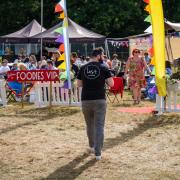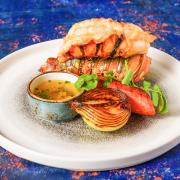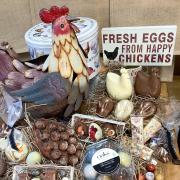We look at some pubs in the Chester area named after animals, including one that Beatles fans regard as a place of pilgrimage WORDS BY MIKE SMITH MAIN PHOTOGRAPHY BY JOHN COCKS
According to a recent survey, Red Lion is the most common pub name in England. White Horse and White Hart also feature in the top ten and there are animal names galore in the top 100. This month’s pub tour begins with a bear and a bull and ends with a dog and a cat.
Although official guide books to the ancient city of Chester make no secret of the fact that many of its famous black-and-white buildings were built in Victorian times, they also point to the presence of several half-timbered structures of more ancient foundation. One of the best is the Bear and Billet Inn on Lower Bridge Street, just inside the city walls.
According to a plaque on its wall, the building was constructed in 1664 as a town house for the Earls of Shrewsbury, who were responsible for guarding Bridgegate, the southern entrance to the city. Subsequently, the house was leased to an innkeeper on the understanding that a suite of rooms should be kept available for the Earl and his family.
An etching from 1820 indicates that the inn was called the Bridgegate Tavern before acquiring its present name. Herein lies a mystery, because the motif of a bear and a ragged staff is a well-known feature on the crest of the Earls of Warwick, but it does not figure at all on the crest of the Earls of Shrewsbury, which carries a depiction of a type of hunting dog known as a ‘Talbot’.
Although assistant manager Larry Richards is unable to explain this discrepancy, he is well informed on the ancestral links of Annie Jane Millward, who was born in the Bear and Billet in 1873. She was the daughter of the clerk to the Earl of Shrewsbury and the grandmother of John Lennon. Tourists enjoying home-cooked food and cask ales in the pub’s wonderful old-world setting often find themselves in the company of Beatles fans, who regard the inn as a place of pilgrimage.
The Bear and Billet has another link with the past in the ghostly form of a kindly old lady who is said to appear on the stairs from time to time. The Pied Bull Hotel, just inside the northern walls of the city, boasts two ghosts: a cellar man from the 17th century and a chamber maid from the 19th century. First licensed in 1473, this is the oldest pub in Chester.
According to manager Luke Smith, the name was changed from Bull Mansion to Pied Bull when the building was re-fronted and converted into a coaching inn in eighteenth century. Luke is unclear why a bull figures in both names but he has carried on the tradition in the microbrewery which has operated in the cellar since the inn was bought by Carl Scourfield three years ago. He told me: ‘The star product of our microbrewery is called Bull’s Hit.’
The Chester Beer Appreciation Society chose the Pied Bull as the venue for their January meeting when they were served with Luke’s home-brewed beer and the pub’s home-cooked food, which is such a feature of the fare on offer in this historic hostelry, which still displays a mileage sign from its days as a coaching inn.
A short drive from the city to the village of Christleton takes us from a spotted bull to a grinning cat, namely the Cheshire Cat made famous by Lewis Carroll.
It has been suggested that pictures of cats on some ancient inn signs in the county are due to the incompetence of painters who made such a poor attempt at representing the lion on the arms of the Dukes of Chester that they ended up with images that looked like grinning cats. The grinning feline on the sign of Christleton’s Cheshire Cat was replaced by a cat of more sober appearance when refurbishment of this popular eating and drinking destination took place in 2008.
Thanks to his grandfather, who is a local historian, assistant manager Dan Broughton, has a thorough knowledge of the pub’s history. He told me: ‘The building dates from 1805, but it stands on the site of the Battle of Rowton Moor, which took place in 1645. In the Second World War, it was commandeered as an administrative centre but then became derelict and even spent some time as a chicken farm before it was restored. It is now in the Innkeeper’s Lodge chain and has several en-suite bedrooms.’
Our tour ends in the neighbouring village of Waverton, where the Black Dog has been serving up home-cooked food and real ale since the 1700s. Its prominence in the village is underlined by the fact that the first train station to be opened in Waverton, back in 1840, was called Black Dog. The station closed when a replacement was built half-a-mile down the line in 1898.
Landlord Philip Jeffreys believes the pub owes its name to a local legend which is described in a poem inscribed on the wall of the bar. The opening verse reads: ‘The Black Dog of Waverton/Has red and awful eyes/And when he runs beside a man/He withers and he dies.’ Since 2003, the local villagers have presented an annual prize known as the Waverton Good Read Award. By coincidence, the first recipient of the prize was Mark Haddon, author of The Curious Incident of the Dog in the Night Time.
Also worth a mention is the Chester Beer Project Blog - a challenge to drink in every Chester pub in the space of a year, that's what we call dedication to reasearch chesterbeerproject.blogspot.com


























